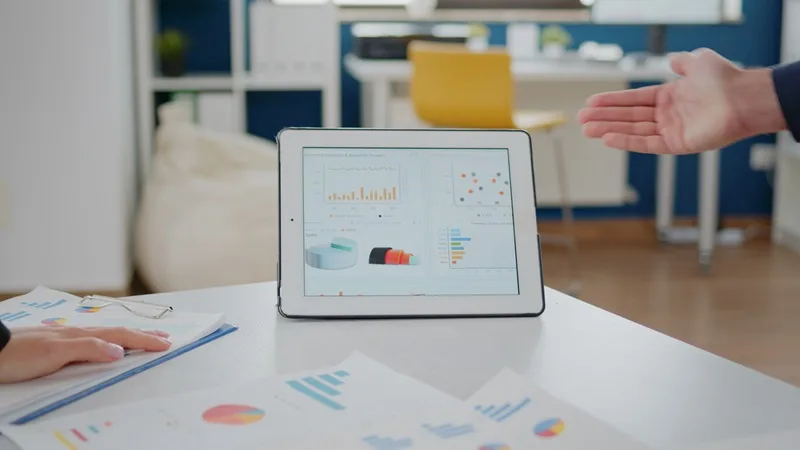Introduction
In today’s fast-paced business world, data plays a crucial role in decision-making and driving success. Companies that leverage data effectively have a competitive advantage over their competitors. One tool that has gained popularity in recent years is the DORA Metrics Dashboard. This article will explore what a DORA dashboard is and its key metrics. Furthermore how to measure them, and the importance of data-driven decision-making. It will also delve into the key features and functionalities of the DORA Metrics Dashboard, how it can improve performance and success, and how to build and implement it in your business. Additionally, best practices for using the DORA Metrics Dashboard effectively, training and resources for learning how to use it, integration with other tools and systems, and maximizing its value will be discussed.
What is a DORA Dashboard?
A DORA dashboard is a powerful tool that provides real-time insights into an organization’s performance and progress towards achieving its goals. DORA stands for DevOps Research and Assessment, which is an organization that conducts research and provides guidance on DevOps practices. The DORA Metrics Dashboard is designed to measure and visualize key metrics related to software delivery and operational performance. It helps businesses identify bottlenecks, track progress, and make data-driven decisions to improve efficiency and effectiveness.
What are the 5 Key Metrics of DORA?
The DORA Metrics Dashboard focuses on five key metrics that are crucial for measuring the performance of software development and delivery teams. These metrics are:
- Deployment Frequency: Firstly, this metric measures how frequently new code is deployed to production. High deployment frequency indicates a higher level of agility and the ability to quickly respond to customer needs.
- Lead Time for Changes: Subsequently, this metric measures the time it takes for a code change to go from development to production. A shorter lead time signifies a more efficient and streamlined software development process.
- Change Failure Rate: Next, this metric measures the percentage of changes that result in failure or require remediation. A low change failure rate indicates a higher level of stability and reliability in the software delivery process.
- Time to Restore Service: Then, this metric measures how long it takes to recover from a service incident or outage. A shorter time to restore service indicates a higher level of resilience and the ability to quickly recover from failures.
- Mean Time to Recover: Finally, this metric measures the average time it takes to recover from a failure or incident. A shorter mean time to recover signifies a more efficient incident response process and the ability to minimize the impact of failures on customers.
How to Measure DORA Metrics?
Measuring DORA metrics requires collecting data from various sources and systems within the software delivery and operational processes. The DORA Metrics Dashboard integrates with tools such as version control systems, continuous integration/continuous delivery (CI/CD) pipelines, issue tracking systems, and monitoring tools to gather the necessary data automatically. It then calculates and visualizes the metrics in real-time, providing a comprehensive view of the organization’s performance. It is important to ensure that the data collected is accurate and reliable to make informed decisions based on the metrics.
Understanding the Importance of Data-Driven Decision Making
Data-driven decision making is the practice of making decisions based on data analysis and insights rather than intuition or personal opinions. It allows businesses to make informed decisions that are backed by evidence and increases the likelihood of success. The DORA Metrics Dashboard enables data-driven decision making by providing real-time visibility into key metrics. It helps identify areas for improvement, measure the impact of changes, and track progress towards goals. Data-driven decision making empowers teams to iterate and experiment, leading to continuous improvement and better business outcomes.

Key Features and Functionalities of the DORA Metrics Dashboard
The DORA Metrics Dashboard offers a range of features and functionalities to help businesses harness the power of data for improved performance and success. Firstly, the DORA Metrics Dashboard provides real-time visualization of key metrics, allowing teams to monitor performance and progress continuously. Secondly, users can customize the dashboard to display the metrics and visualizations that are most relevant to their specific needs and goals. Additionally, the dashboard can be configured to send alerts and notifications when certain metrics cross predefined thresholds, enabling proactive action. Moreover, the DORA Metrics Dashboard stores historical data, enabling teams to analyze trends, identify patterns, and make data-driven decisions based on past performance. Lastly, the dashboard facilitates collaboration among team members by providing a centralized platform to view and discuss metrics, share insights, and align on goals.
How the DORA Metrics Dashboard can Improve Performance and Success
The DORA Metrics Dashboard can significantly improve performance and success by providing actionable insights and fostering a data-driven culture. It helps teams identify bottlenecks, inefficiencies, and areas for improvement in the software development and delivery processes. By measuring key metrics, teams can set realistic goals, track progress, and make data-driven decisions to drive continuous improvement. The dashboard enables teams to identify trends, patterns, and correlations, allowing them to optimize performance and achieve better outcomes. By leveraging the power of data, businesses can gain a competitive advantage, improve customer satisfaction, and drive overall success.
How to Build a DORA Dashboard?
Building a DORA Dashboard requires careful planning and consideration of the specific needs and goals of the organization. Here are the steps involved in building a DORA Dashboard:
- Define Metrics: Firstly, identify the key metrics that are most relevant to your business and align with your goals. These metrics should be measurable, actionable, and provide insights into the performance of your software development and delivery processes.
- Collect Data: Next, determine the sources and systems from which you will collect data. Integrate the DORA Metrics Dashboard with these tools to automatically gather the necessary data.
- Design Visualizations: Subsequently, design visualizations that effectively communicate the metrics and insights. Consider the target audience and their requirements when designing the dashboard.
- Implement Dashboard: Then, develop and implement the DORA Metrics Dashboard using the chosen visualization tools and technologies. Ensure that the dashboard is user-friendly, intuitive, and provides easy access to the metrics and visualizations.
- Test and Iterate: Finally, test the dashboard to ensure that it accurately captures and visualizes the metrics. Gather feedback from users and iterate on the design and functionality based on their input.
Implementing the DORA Metrics Dashboard in Your Business
Implementing the DORA Metrics Dashboard in your business requires a systematic approach to ensure a smooth transition and successful adoption. Firstly, clearly define the objectives and goals you want to achieve with the DORA Metrics Dashboard. Communicate these objectives to the relevant stakeholders to ensure alignment and support. Additionally, provide training and resources to your teams to ensure they understand the purpose, benefits, and functionalities of the dashboard. This will help them effectively use the dashboard and make data-driven decisions.
Start small by implementing the dashboard in a small team or project to test its effectiveness and gather feedback. Use this feedback to refine and improve the dashboard before rolling it out to the entire organization. Continuously monitor the usage and impact of the DORA Metrics Dashboard. Measure the improvements in performance, efficiency, and customer satisfaction to quantify the value it brings to the organization. Based on the feedback and results, refine and improve the dashboard iteratively. Once it has proven its value, scale the implementation to other teams and projects within the organization.
Best Practices for Using the DORA Metrics Dashboard Effectively
To maximize the benefits of the DORA Metrics Dashboard, it is important to follow some best practices. Firstly, focus on actionable metrics to prioritize those that can drive meaningful improvements while avoiding collecting an overwhelming amount of unrelated metrics. Additionally, schedule regular meetings or discussions to review the metrics on the dashboard, encouraging collaboration and open dialogue to identify areas for improvement and take proactive action. Set realistic goals for your teams using the metrics on the dashboard, ensuring that these goals are challenging yet achievable and align with the overall objectives of the organization. Moreover, acknowledge and celebrate achievements and improvements based on the metrics, while also using failures as opportunities for growth and improvement. Lastly, continuously seek feedback, analyze the data, and iterate on the dashboard to make it more effective and valuable to the organization.
Training and Resources for Learning How to Use the DORA Metrics Dashboard
To help businesses make the most of the DORA Metrics Dashboard, various training and resources are available. These resources provide guidance on using the dashboard effectively, understanding the metrics, and implementing best practices. Some recommended resources include:
1. DORA Metrics Dashboard Documentation: The official documentation of the DORA Metrics Dashboard provides detailed information on its features, functionalities, and usage.
2. Online Courses and Workshops: Many online platforms offer courses and workshops specifically designed to train individuals and teams on using the DORA Metrics Dashboard effectively.
3. Community Forums and Discussion Groups: Participate in community forums and discussion groups to connect with other users of the DORA Metrics Dashboard. Share experiences, ask questions, and learn from the collective knowledge of the community.
4. Consulting and Training Services: Engage with consulting and training services that specialize in DevOps practices and the DORA Metrics Dashboard. These services can provide personalized guidance and support tailored to your specific requirements.
DORA Metrics Dashboard Example
To illustrate the power and capabilities of the DORA Metrics Dashboard, consider the following example:
A software development team is using the DORA Metrics Dashboard to measure their deployment frequency, lead time for changes, change failure rate, time to restore service, and mean time to recover. The dashboard provides real-time visualizations of these metrics, allowing the team to monitor their performance and progress towards their goals. They notice that their deployment frequency has increased significantly after implementing certain process improvements. The lead time for changes has also reduced, indicating a more efficient software development process. The change failure rate has decreased, resulting in improved stability and reliability. The team uses the insights from the dashboard to identify areas for further improvement and track the impact of their changes over time.
Integration with Other Tools and Systems
The DORA Metrics Dashboard can be integrated with other tools and systems to further enhance its capabilities and provide a holistic view of an organization’s performance. Integration with version control systems, CI/CD pipelines, issue tracking systems, and monitoring tools allows for seamless data collection and visualization. This integration enables teams to correlate metrics from different sources, identify dependencies and bottlenecks, and make data-driven decisions based on a comprehensive understanding of their software delivery and operational processes.
Conclusion
The DORA Metrics Dashboard is a powerful tool that enables businesses to harness the power of data for improved performance and success. By measuring key metrics, organizations can identify areas for improvement, track progress, and make data-driven decisions to drive continuous improvement. The key features and functionalities of the DORA Metrics Dashboard, along with best practices for using it effectively, ensure that businesses can maximize its value. By building and implementing the dashboard with careful planning and consideration, organizations can unlock insights, optimize performance, and achieve better business outcomes. So, embrace the DORA Metrics Dashboard and harness the power of data to propel your business towards success.
To learn more about the DORA Metrics Dashboard and how it can transform your business, read our article DevOps Research and Assessment: Unlocking the Path to Success. Start harnessing the power of data to improve performance and drive success today!









Leave a Reply